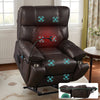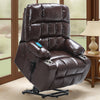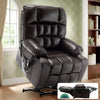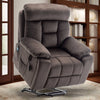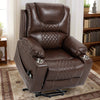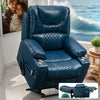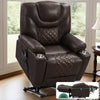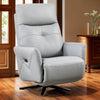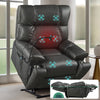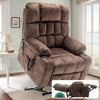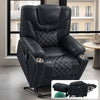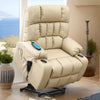Understanding the Needs of the Elderly for Mobility and Comfort
Analyzing the Demographics: The Rising Elderly Population in the United States
The United States is witnessing a significant increase in its elderly population. This trend is shaping the need for better mobility solutions. As people live longer, the demand for comfortable living aids grows. The number of Americans aged 65 and older is expected to double by 2060. This shift creates new challenges and opportunities in elderly care. It also drives innovation in mobility products like lift chairs and recliners.
Key Considerations for Elderly Mobility Solutions
When designing mobility solutions for the elderly, several factors are crucial. Safety is the top priority, followed by ease of use. Products must be sturdy and stable to prevent falls. They should also be simple to operate, even for those with limited dexterity. Comfort is another key aspect, as seniors may spend long hours seated. Durability is important too, as these aids need to withstand daily use. Finally, affordability is a concern for many seniors on fixed incomes.
The Importance of Ergonomics and Comfort
Ergonomics plays a vital role in elderly mobility solutions. Proper support can reduce pain and improve posture. It can also prevent pressure sores from long periods of sitting. Comfort goes beyond just feeling good - it affects overall health. A comfortable chair can improve circulation and reduce muscle stiffness. It can also encourage seniors to stay active and engaged. Good ergonomics can even help with tasks like standing up or sitting down.
Technological Advancements in Lift Chairs and Recliners for Elderly
Material Innovations for Enhanced Comfort
New materials are revolutionizing lift chairs and recliners for the elderly. Memory foam adapts to body shape, providing custom support. Gel-infused foam helps regulate temperature for added comfort. Breathable fabrics keep users cool and dry. Some materials are now stain-resistant and easy to clean. This is crucial for maintaining hygiene. Advanced padding techniques distribute weight evenly, reducing pressure points. These innovations make sitting for long periods more comfortable and healthier.
Design Evolution: Balancing Functionality and Aesthetics
Lift chairs and recliners have come a long way in design. They now blend seamlessly with home decor. Sleek lines and modern fabrics make them look like regular furniture. Yet, they still offer full functionality for the elderly. Compact designs suit smaller living spaces. Some models offer customizable features to match any decor. The goal is to create aids that don't look medical. This helps seniors feel more at home and less like they're using a device.
Smart Features for Ease of Use and Safety
Technology has added smart features to lift chairs and recliners. Remote controls with large buttons are easier for seniors to use. Some chairs have voice activation for hands-free operation. Built-in USB ports allow charging of devices while seated. Safety sensors can detect obstacles when lowering the chair. Some models connect to smartphones for easy adjustments. Heat and massage functions provide extra comfort. These features make the chairs more user-friendly and safer for the elderly.
Implementing Elderly Mobility Solutions in the Home and Community
Strategies for Integrating Lift Chairs and Recliners in Family Homes
Integrating lift chairs in homes requires thoughtful planning. Place them in areas where seniors spend most of their time. Ensure there's enough space around the chair for easy access. Consider the room's layout to maintain a natural flow. Choose a style that complements existing furniture. Involve the senior in the selection process to ensure it meets their needs. Educate family members on how to use and maintain the chair. This helps create a supportive environment for the elderly.
The Role of Lift Chairs and Recliners in Assisted Living Facilities
Lift chairs play a crucial role in assisted living facilities. They promote independence among residents. These chairs help reduce the workload on caregivers. They can be placed in common areas for shared use. In private rooms, they offer personalized comfort. Some facilities use them in therapy sessions to improve mobility. They also reduce the risk of falls during transfers. Staff should be trained in proper use and maintenance of these chairs.
Evaluating the Impact of Mobility Solutions on Quality of Life and Independence
Mobility solutions like lift chairs significantly impact seniors' lives. They increase independence in daily activities. This boost in self-reliance improves mental well-being. Seniors can join family gatherings more easily. They feel more in control of their environment. Physical health often improves due to better posture and circulation. Social interactions increase as mobility becomes easier. Overall, these solutions enhance the quality of life for the elderly. They allow seniors to age in place with dignity and comfort.








